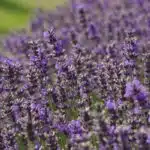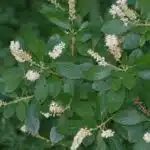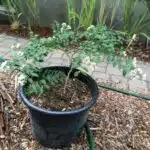French Lavender is one of the most popular and beloved herbs in the world. This fragrant plant is a perennial favorite for gardeners, with its beautiful purple blooms that attract butterflies and bees. A recent survey found that 80% of gardeners choose to grow lavender for its calming scent and medicinal benefits. As an herb with many uses, it’s no wonder why so many people are drawn to this flowering shrub!
This guide will provide you with all you need to know about growing French Lavender in your own home or garden. Whether you are just getting started as a gardener, or if you’re a seasoned pro looking for some extra tips, this article has something for everyone! We’ll cover topics like soil preparation, planting techniques, pruning and harvesting, as well as advice on how to get the most out of your French Lavender plants.
We’ll also discuss common pests and diseases that can affect your plants as well as how to keep them healthy throughout the seasons. With this guide by your side, you can rest assured that your French Lavender plants will be thriving in no time! So let’s get started on our journey into the wonderful world of French Lavender!
Planting French Lavender
Planting French Lavender is like a beautiful mosaic. Each piece of the puzzle, from soil to climate and location, must be carefully considered. Botanists and gardeners alike can find success in this unique lavender species with some preparation and knowledge.
Preparing the soil for your French Lavender is an essential step toward successfully growing these plants. The ideal soil should be well-draining, light and slightly acidic. Make sure to add organic matter such as compost or rotted manure before planting; this will help ensure that your lavender develops a deep root system, allowing it to access nutrients and water more easily. Additionally, if you live in an area with heavy clay soils, consider adding sand or perlite to the mix before planting.
When selecting a spot for your plants, make sure they receive adequate sun exposure—at least six hours of full sun each day is ideal. French Lavender also prefers drier climates over humid ones; if you live in an area with high humidity levels, try planting your lavender in raised beds or on hillsides so that it can better access air circulation. With all these elements addressed, your French Lavender will have the best chance at thriving in its new home.
Preparing The Soil
Cultivating French lavender in your garden can be a beautiful and rewarding experience. Preparing the soil before planting is essential for successfully growing these fragrant blooms. Let’s explore the steps to take in order to give your lavender plants a good start.
The first step is to assess the soil type. French lavender prefers well-drained, slightly alkaline soil with a pH between 6 and 8. If necessary, you can adjust the pH of the soil by adding lime or sulfur prior to planting.
Once you’ve tested and adjusted the pH of your soil, it’s important to loosen up any hard clumps or clay-like particles that may have formed over time. This helps ensure oxygen will reach the roots of your plants and allows them to absorb nutrients from their environment more easily. Incorporating organic matter such as composted manure or leaf mold into your soil helps it stay loose, improves drainage, and adds fertility for optimal growth conditions.
Following these steps before planting your French lavender will help ensure beautiful blooms for many years!
Planting French Lavender In Containers
Did you know that 95% of French lavender plants are grown for ornamental purposes? If you’re looking to add a beautiful purple hue to your garden, then this plant is an ideal choice. Now, let’s focus on planting French lavender in containers.
Before planting the lavender, ensure the container has drainage holes at the bottom and fill it with potting soil that has been enriched with compost or other organic matter. To keep the roots healthy, choose a pot that is at least 8 inches in diameter and 12 inches deep. Once you have filled the container with soil, make sure to water it well before adding the lavender plant.
When it comes to positioning your container, be sure to place it in a sunny spot that gets plenty of light throughout the day. Lavender prefers warm temperatures, so try to avoid areas where cold winds may blow against it too often. For optimal growth, aim to provide at least 6 hours of direct sunlight per day when possible.
TIP: When adding fertilizer to your French lavender container, opt for an organic type such as compost tea or slow-release granular fertilizers like fish emulsion which can be applied every few weeks during spring and summer months for best results.
Watering And Fertilizing French Lavender
Watering and fertilizing French Lavender is an essential step in its cultivation. When grown in containers, it’s important to monitor the soil moisture levels closely and water when necessary. Using a balanced fertilizer will help keep the plant healthy and promote flowering. If the leaves start to yellow or curl, then the plant may need more nutrients.
In order for French Lavender to thrive, it’s important to provide enough water but not too much. Too much water can lead to root rot and other issues with the plant’s health. The best way to determine how much water is needed is by feeling the soil with your finger – if it feels dry, then it’s time to water! Additionally, fertilizing should be done every couple of weeks during peak growing season. Make sure to use a balanced fertilizer that’s high in potassium and nitrogen for best results.
It’s also important to keep an eye on the plant’s foliage for signs of nutrient deficiency such as yellowing or curling leaves. If these symptoms appear then increasing fertilizer frequency may be necessary. Additionally, make sure that you are providing enough light and air circulation around the plants so they can grow strong and healthy! By following these steps you’ll be well on your way towards cultivating beautiful French Lavender plants successfully!
Pruning French Lavender
Pruning French Lavender is like giving an old friend a well-deserved trim. It’s a time to refresh, rejuvenate, and bring the plant back to life. Pruning is essential for maintaining a healthy and attractive lavender bush. With the right pruning techniques, you can ensure your lavender thrives year after year.
When pruning French Lavender, start by removing any dead wood or damaged branches. This will help encourage new growth and improve air circulation around the plant. Next, remove any stems that are crossing over one another. Doing so will create a neat shape for the plant and reduce competition for light and nutrients between branches.
Finally, cut back the stems of your lavender bush to promote compact growth and flower production. When cutting back stems, make sure to leave enough foliage on each stem for photosynthesis to take place; otherwise, your plants won’t be able to produce flowers or remain healthy. After pruning, give your lavender plants plenty of water and fertilizer to help them thrive in their new form!
With careful pruning techniques, you can ensure your French Lavender remains healthy and beautiful throughout the seasons – all while providing a pleasant scent in your garden!
Controlling Pests And Diseases
Pruning French lavender is an important part of its care, but it’s also important to understand how to protect your plant from pests and diseases. Pests and diseases can cause a range of problems, including stunting growth, discolouration of foliage, reduced flowering, and even death. That’s why it’s essential for gardeners to be aware of the signs of pest and disease infestation and take measures to prevent or treat them.
The most common pests that affect French lavender are aphids, scale insects, mealybugs, whiteflies, and spider mites. All these pests feed off the sap of the leaves or stems and can stunt its growth. If you see any of these pests on your French lavender plants, using an insecticidal soap spray or neem oil is an effective way to eliminate them without harming beneficial insects in your garden.
In addition to pests, fungal diseases can also be a problem for lavender plants if the humidity is too high or if the soil has inadequate drainage. Fungal infections such as powdery mildew can cause wilting leaves and discoloration on foliage. To prevent this type of infection from occurring in the first place, make sure that your French lavender is growing in well-draining soil with plenty of airflow around it. Additionally, avoid overhead watering so that moisture isn’t trapped on the leaves which could promote fungal growth.
These preventive measures are vital not just for keeping your French lavender plants healthy but for ensuring that you get maximum yield when it comes time for harvesting them.
Harvesting French Lavender
Picking precious petals of plump purple plants, harvesting French lavender is a fragrant and fulfilling task. While harvesting lavender requires careful consideration, it’s a gratifying garden goal that can be achieved with the right know-how. To ensure the most successful harvest, there are several steps to keep in mind:
• Timing: The best time to pick lavender flowers is when buds have opened but before they start to wilt and fade. This usually occurs mid-July through mid-August. • Method: Use scissors or small garden shears to cut off the flower stems as close to ground level as possible without damaging other nearby plants. Avoid tugging on the stem as this can damage the plant. • Quantity: Limit the amount of flowers you take from each plant so that it can still produce enough energy for the following year. Taking too much from one plant can cause it to go into shock and fail to bloom again next season.
When done correctly, harvesting French lavender can reward you with an abundant harvest of aromatic blooms that add beauty and fragrance to any home or garden! With these simple tips in mind, any gardener can enjoy a bountiful bloom cycle year after year. As such harvests are vital for preserving French lavender’s vibrant verdure, taking care in reaping rewards will ensure lush life for years to come.
Preserving French Lavender
Preserving French Lavender is a great way to enjoy the beauty of this plant for many years. It’s easy to do, and with the correct methods, you can ensure that the lavender retains its beautiful color and aroma. Here are some tips on how to properly preserve your French Lavender.
First, when harvesting your lavender, cut just above a leaf node so that the stem remains on the plant. This will help keep the stems strong and prevent them from drying out completely or breaking off easily. You should also harvest in dry weather as this will help prevent any mold growth while preserving your flowers.
Next, you’ll want to hang your lavender bunches upside down in a cool, dark place with good air circulation. This helps draw out moisture from the flowers and leaves while allowing them to dry evenly. To ensure optimal preservation, leave your bundles in this spot for two weeks before moving them into an airtight container for long-term storage.
Finally, adding silica gel packets can be beneficial in keeping your French Lavender fresh for longer periods of time if stored correctly. The silica gel helps absorb any excess moisture from within the container to maintain optimal humidity levels inside so that your lavender won’t lose its color or fragrance over time. TIP: When preserving French Lavender make sure to store it in a cool dark place away from direct sunlight and heat sources for best results!
Creative Uses For French Lavender
As sweet-smelling as a summer’s bouquet, French Lavender is an eye-catching addition to any garden. Its fragrant and drought resistant qualities make it ideal for creating a beautiful and captivating landscape. But its usefulness does not end with aesthetics; with a little creativity, you can use French Lavender in many interesting and practical ways.
One of the most delightful ways to incorporate French Lavender into your life is by making homemade products from its essential oil or flowers. You can create soothing bath salts that will provide a luxurious experience and add ambiance to your home. Additionally, lavender essential oil can be used to make natural air fresheners, perfumes, and even cleaning products. You can also craft sachets or dried flower arrangements for gifting or decorating your own space.
In addition to these traditional uses, French Lavender has many other creative applications. For example, lavender flowers are an excellent way to flavor food dishes like salads or desserts like ice cream. Its petals also make wonderful additions to tea blends that offer both delicious taste and calming aromas. Ground lavender buds are even sometimes used as a substitute for salt – providing new flavor dimensions without the unhealthy sodium content!
No matter how you choose to use it, French Lavender adds beauty and versatility to any garden – making it an invaluable addition for any green thumb looking for something truly special.
Companion Planting With French Lavender
We all know the sweet, soothing aroma of French Lavender and how it can instantly relax us. But did you know that this beautiful herb can be used to enhance your garden, too? By companion planting with French Lavender, you can create an oasis of beauty, scent, and health for your plants. Let’s explore the possibilities!
Companion planting is a method of using different plants alongside one another to support each other’s growth. It works by providing beneficial characteristics such as shade, nutrients, or protection from pests. When it comes to French Lavender, its high oil content helps protect other plants from diseases and pests. This means that it’s a great companion plant for many herbs and vegetables. For example, rosemary loves the sun but grows best when shaded by taller French Lavender plants. Other good pairings include chamomile, dill, thyme and oregano.
The benefits don’t stop there; not only does French Lavender encourage healthy growth in other plants but also attracts beneficial insects like bees and ladybugs which help keep pests away from your garden. And because it blooms continuously throughout the summer months, you get a steady supply of vibrant color and delightful fragrance all season long! So why not give companion planting with French Lavender a try? You’ll reap the rewards in no time!
Growing French Lavender Indoors
French lavender is an aromatic and attractive plant that can be grown both indoors and outdoors. According to research, up to 80% of gardeners in the United States have grown lavender on their property at some point. Growing French lavender indoors allows gardeners to enjoy its beauty regardless of the outdoor climate.
The key to successful indoor growing of French lavender is providing the correct environment. The plant needs full sun and a minimum temperature of 50 degrees Fahrenheit for optimal growth. It also requires well-draining soil with a pH level between 6.0 and 8.0. To ensure adequate drainage, it is important to use containers with drainage holes when planting indoors or adding perlite or sand to the soil mix.
When caring for French lavender indoors, it is essential to water regularly but not overwatering as this will cause root rot. Fertilizer should be applied every two weeks during the growing season, but never during winter months as this could damage the plant due its dormancy period. Pruning should also be done throughout the year to encourage bushier growth and prevent legginess. With proper care, indoor grown French lavender will bring beauty and fragrance into any home or office space!
Understanding French Lavender Varieties
When it comes to selecting French Lavender varieties, there is an abundance of options available. It’s like being a kid in a candy store! With so many choices, it can be overwhelming trying to pick one that best suits your needs. As a specialist in botany and gardening, I’m here to help guide you through making the right decision for your garden.
The most important thing to consider when selecting a variety is your climate and local growing conditions. Different varieties have different levels of tolerance when it comes to cold temperatures and humidity levels. When choosing, make sure you’re aware of the plant’s hardiness zone as this will ensure that it can survive in your area. Additionally, you should also consider the size of the plant and its growth habit. Some French Lavenders are low-growing ground cover plants while others are tall shrubs with long flower stems that reach toward the sky.
Once you’ve narrowed down your selection based on these criteria, you can then begin exploring the various colors and flower shapes available for each variety. You’ll find that some French Lavenders will produce light purple blooms while others will have deep purple or even white flowers – allowing for endless possibilities for creating unique landscapes with this beautiful plant!
With all these factors taken into account, selecting the perfect French Lavender variety for your garden should be much easier now! Next up, let’s explore how best to use these varieties in outdoor landscapes…
French Lavender In Landscapes
French Lavender is a beautiful addition to any landscape. Its fragrant blooms, attractive foliage, and low maintenance requirements make it an ideal choice for gardeners of all levels. In this section, we will discuss how French Lavender can be used in a variety of ways to make your outdoor space more inviting and enjoyable.
First, French Lavender looks great when planted in groups or as a border along walkways or driveways. The vibrant purple blooms will add color and interest to your garden while the strong scent will fill the air with its unmistakable aroma. Additionally, this plant can be used as a ground cover or in window boxes and planters for a unique display feature.
Second, French Lavender makes an excellent companion plant due to its ability to attract pollinators like bees and butterflies to your garden. It also does well when planted alongside other perennials such as roses or lilies for added texture and interest. Plus, its drought-resistant qualities mean that it won’t require much additional water once established.
Finally, you’ll want to choose the right location when planting French Lavender so that it receives adequate sunlight throughout the day and has proper drainage. Once established, this plant will thrive with minimal care – just remember to trim back old stems each spring for best results!
Common Problems With French Lavender
French lavender is a fragrant, beautiful addition to any landscape. It’s captivating purple blooms dance in the summer breeze and its pleasant aroma fills the air with a gentle scent. But, as with any living thing, it needs care and attention in order to flourish. This article will discuss the common problems associated with French lavender and how to address them.
First of all, French lavender is prone to fungal diseases like powdery mildew and root rot if they are over-watered or planted in poorly draining soil. To prevent these common issues, make sure your plants have adequate drainage and don’t water too often – ideally once every week or two should be enough. Additionally, keeping the area around your plants free of weeds will help prevent disease from spreading.
Insects can also be problematic for French lavender, but there are a few steps you can take to keep them away. Pruning off damaged branches and leaves regularly helps reduce the risk of pests infesting your plants; using insecticides such as neem oil is another effective way of keeping them at bay. Finally, making sure that your plants get enough sunlight is essential for healthy growth – try to position them in an area that gets at least six hours of direct sunlight each day.
French lavender may present some challenges, but with proper care and attention it can thrive in even the most challenging of landscapes! With just a few simple steps you can ensure your plants stay healthy and flower beautifully every season – so get out there and start gardening!
Tips For Growing French Lavender
Growing French Lavender is an art and it can bring about amazing results when done properly. It’s a plant that requires special care, but can offer beauty and fragrance to your garden with its deep purple flowers. As a specialist in botany and gardening, I’m here to provide you with the tips for growing French Lavender that will make your experience more enjoyable and successful.
First of all, French Lavender should be planted in an area that gets at least 6 hours of direct sunlight per day. This will ensure that the lavender plants get the necessary light they need to thrive and produce fragrant blooms. Watering should be done deeply and regularly, making sure not to overwater as this can cause root rot. Additionally, pruning should be done regularly as it helps keep the plant healthy by removing dead or damaged branches which also encourages new growth.
Finally, it’s important to use fertilizer specifically designed for lavender plants once or twice a year. This will help promote strong growth and help protect against common diseases like powdery mildew which can affect the health of your plants if left untreated. With careful attention to these simple tips, you’ll soon be able to enjoy beautiful blooms of French Lavender in your garden!
Frequently Asked Questions
What Is The Best Time Of Year To Plant French Lavender?
The sweet aroma of French lavender is a thing of beauty, but it doesn’t just appear out of thin air. To ensure your lavender thrives, it’s important to know when the best time to plant is. Here, we’ll explore why planting at the right time is so critical for success, and how you can make sure your French lavender has the best start possible.
We all know that timing is everything and this couldn’t be more true when it comes to growing French lavender. Planting too late in the season means that new plants may not have enough time to get properly established before winter sets in, while planting too early can mean young plants are exposed to colder temperatures than they should be. The ideal time for planting French lavender is during mild spring weather – ideally between March and April, depending on your location.
This gives young plants some extra time to become established before summer heat arrives. If you’re able to wait until later into spring or even early summer, this is also acceptable as long as you take care not to plant too soon after frost or cold snaps. By following these simple steps you can ensure that your French lavender will have a strong start and will continue growing happily throughout the season.
Is It Possible To Propagate French Lavender From Cuttings?
Have you ever wondered if it was possible to propagate French Lavender from cuttings? If so, you’re in luck! As a Specialist in botany and gardening, I’m here to tell you that propagating French Lavender from cuttings is not only possible, but relatively easy.
For those of us who love the beauty of Lavender and its calming scent, the idea of propagating it from cuttings is an exciting one. It’s an economical way to expand your garden with this wonderful plant. And although it requires patience and attention, the rewards are well worth it.
To get started, find a healthy lavender plant that has at least three or four inches of stem below the leaves. Take a cutting just below the leaf node and remove all but two or three leaves. Place the cutting into moist soil and keep it moist until roots begin to form. In just a few weeks, you should see new growth beginning to appear on your lavender plants. With proper care and maintenance, you can enjoy the beauty of French Lavender for years to come!
So don’t wait – start propagating your own French Lavender today! With its beautiful blooms and calming scent, your garden will be transformed in no time at all. You’ll be able to share its beauty with others for years to come!
How Often Should French Lavender Be Watered?
Gardening with French Lavender is an exercise in finesse and patience. It may seem simple, but the right technique can make a world of difference for these delicate flowers. One of the most important questions to consider when growing French Lavender is how often should it be watered? Let’s explore this question in further detail.
To start us off, let’s look at the basics – French lavender requires well-drained soil that has been enriched with compost or manure. It also needs full sun exposure and adequate watering. As far as frequency, French lavender needs to be watered on a regular basis while being careful not to over water it. The best way to determine if your lavender needs water is to check the soil – if it feels dry, then it’s time to give the plant some water.
It’s important to note that during warm weather, you’ll need to water your French Lavender more frequently than during cooler months. When temperatures reach above 80°F (27°C), you’ll need to water your plants every other day or so depending on what type of soil you’re using and how quickly it dries out. Just remember, though – too much water can be just as damaging as not enough! If you find that your plant isn’t getting enough moisture, try using a mulch such as pine needles or straw around it for better retention of moisture in the soil.
Watering your French Lavender correctly will help ensure a healthy and beautiful garden for years to come! With proper care and attention, these fragrant blooms will remain a vibrant part of any landscape or garden setting for generations. By understanding how oftenFrench Lavender should be watered, you can rest assured knowing that your plants are getting exactly what they need — no more and no less!
What Are The Benefits Of Companion Planting With French Lavender?
Companion planting is a beneficial technique for gardeners, and it’s a great way to take advantage of the qualities of different plants. French lavender offers many benefits when planted alongside other plants, ranging from pest control to nutrient regulation. In this article, we’ll discuss the advantages of companion planting with French lavender so you can make an informed decision about incorporating it into your landscaping.
First and foremost, companion planting with French lavender can help repel harmful pests. The strong aroma of the plant acts as a natural deterrent for insects, including aphids and moths. Additionally, its pungent scent has been known to ward off other small animals that may damage your garden. This means that you won’t have to use potentially toxic pesticides or insecticides in your garden if you pair French lavender with other plants.
Additionally, French lavender can help regulate nutrient levels in the soil around it, making it an ideal companion plant for vegetables and herbs that need specific levels of vitamins and minerals in order to thrive. Its roots pull nutrients from the ground, which helps keep the soil balanced and healthy for nearby plants. Additionally, its flowers attract beneficial pollinators like bees and butterflies which are essential for productive gardens.
In summary, there are plenty of advantages to utilizing companion planting with French lavender in your landscape design. Not only does it provide a natural form of pest control but also helps regulate nutrient levels in the soil surrounding it – all while attracting beneficial pollinators like bees and butterflies! As such, incorporating this versatile plant into your garden is a smart choice for any gardener looking for easy ways to boost their outdoor space’s health and productivity.
How Do I Know When To Harvest French Lavender?
Harvesting French lavender at the right time is essential for getting the most out of this fragrant and beautiful plant. As a specialist in botany and gardening, I’m here to provide you with the information you need to know to get it right.
First of all, let’s consider why harvesting is so important. It’s not just about how it looks or smells, but also how it can affect the overall health of your plant. By harvesting correctly, you’ll ensure that your French lavender remains healthy and continues to provide an abundance of blooms every year. Here’s what you need to consider:
• Timing: The best time to harvest French lavender is when flowers are fully open and in bloom. This will produce a sweeter scent and longer lasting blooms.
• Cuttings: To harvest French lavender, cut stems from the top of the plant, leaving some leaves on each stem for regrowth. Make sure to use sharp scissors for clean cuts that won’t damage the plant.
• Preservation: Once harvested, hang stems upside down in a cool dry place until they’re completely dry. Then store them in an airtight container away from sunlight for long-term preservation.
These tips should help you get started harvesting French lavender at its optimum time so that you can enjoy its many benefits throughout the season – from its sweet aroma and gorgeous flowers to its health benefits when used medicinally or as part of companion planting schemes. So don’t wait any longer – start harvesting your French lavender today!
Conclusion
The French Lavender is a beautiful and fragrant addition to any garden. It requires regular maintenance to thrive, but with the right care and attention it can provide many rewards. Planting in the early spring will ensure it has plenty of time to mature before winter sets in. Propagating from cuttings is an easy way to increase your lavender crop and companion planting can help create a balanced environment that encourages healthy growth. Watering deeply and regularly will help keep the plant healthy, and you’ll know when it’s time for harvest when the flower spikes start to dry out.
As with any gardening endeavor, patience and dedication are key components to success with French Lavender. For those who take the time to nurture this delightful plant, the rewards will be evident through its aromatic beauty and abundance of blooms. Like a beacon of light on a dark night, lavender is a symbol of hope and good fortune that has stood the test of time – an allusion to its timelessness as one of nature’s most beloved gifts.
Whether you are growing French Lavender for its therapeutic benefits or simply because you love its fragrance, taking proper care of your plant will ensure it remains vibrant for years to come. With proper soil preparation, regular watering, and occasional pruning or deadheading, this hardy little shrub will bring joy into your garden season after season!





























